Building Detection in High-Resolution Remote Sensing Images by Enhancing Superpixel Segmentation and Classification Using Deep Learning Approaches
Abstract
1. Introduction
2. Related Work
3. Methodology
3.1. Superpixel Segmentation
3.2. Variational Autoencoders for Feature Extraction
3.3. Accurate Buildings Locations and Shapes
| Algorithm 1: Accurate Buildings Locations and Shapes |
|
4. Experiments and Results Analysis
- WHU aerial imagery 2016 dataset: originally built by the New Zealand Land Information Services. In our experiments, we have used the edited version of the dataset introduced by [35]. It includes aerial images of 187,000 buildings down-sampled to 0.3 m ground resolution and cropped into 8189 tiles of 512 × 512 pixels. The samples were divided into a training set of 130,500 buildings, a validation set of 14,500 buildings, and a test set of 42,000 buildings.
- Land Information New Zealand urban aerial image dataset of Masterton: It has a ground resolution of 0.075 m, and it was cropped into patches of size 1024 × 1024 pixels. The datasets were chosen for their ability to cover a variety of land types, including different roof color patterns and building shapes. This made them well-suited for testing the effectiveness of the building detection model being proposed.
- We collected high-resolution Google Earth images from different sites in Touggourt, Algeria. The images are chosen to represent different building characteristics, such as sizes and shapes.
4.1. Parameters Selection
4.1.1. SLIC Parameter
4.1.2. VAE Parameter and Performance
4.1.3. CNN Hyperparameters
4.2. Building Detection Results Comparison
- when shadows from other neighboring objects fall on sidewalks or driveways with similar features to the buildings they are next to;
- when small and closely located buildings are considered one single building;
- when shadows separate the same building into two or when trees cover parts of buildings.
5. Conclusions
Author Contributions
Funding
Data Availability Statement
Conflicts of Interest
References
- Sirko, W.; Kashubin, S.; Ritter, M.; Annkah, A.; Bouchareb, Y.S.E.; Dauphin, Y.; Keysers, D.; Neumann, M.; Cisse, M.; Quinn, J. Continental-Scale Building Detection from High Resolution Satellite Imagery. arXiv 2021, arXiv:2107.12283. [Google Scholar]
- Shen, X.; Wang, D.; Mao, K.; Anagnostou, E.; Hong, Y. Inundation Extent Mapping by Synthetic Aperture Radar: A Review. Remote Sens. 2019, 11, 879. [Google Scholar] [CrossRef]
- Ullo, S.L.; Zarro, C.; Wojtowicz, K.; Meoli, G.; Focareta, M. LiDAR-Based System and Optical VHR Data for Building Detection and Mapping. Sensors 2020, 20, 1285. [Google Scholar] [CrossRef] [PubMed]
- Hou, X.; Bai, Y.; Li, Y.; Shang, C.; Shen, Q. High-resolution triplet network with dynamic multiscale feature for change detection on satellite images. ISPRS J. Photogramm. Remote Sens. 2021, 177, 103–115. [Google Scholar] [CrossRef]
- Benz, U.C.; Hofmann, P.; Willhauck, G.; Lingenfelder, I.; Heynen, M. Multi-resolution, object-oriented fuzzy analysis of remote sensing data for GIS-ready information. ISPRS J. Photogramm. Remote Sens. 2004, 58, 239–258. [Google Scholar] [CrossRef]
- Ghandour, A.J.; Jezzini, A.A. Post-War Building Damage Detection. Proceedings 2018, 2, 359. [Google Scholar] [CrossRef]
- Ghandour, A.J.; Jezzini, A.A. Autonomous Building Detection Using Edge Properties and Image Color Invariants. Buildings 2018, 8, 65. [Google Scholar] [CrossRef]
- Aamir, M.; Pu, Y.-F.; Rahman, Z.; Tahir, M.; Naeem, H.; Dai, Q. A Framework for Automatic Building Detection from Low-Contrast Satellite Images. Symmetry 2019, 11, 3. [Google Scholar] [CrossRef]
- Luo, S.; Li, H.; Shen, H. Deeply supervised convolutional neural network for shadow detection based on a novel aerial shadow imagery dataset. ISPRS J. Photogramm. Remote Sens. 2020, 167, 443–457. [Google Scholar] [CrossRef]
- Li, J.; Huang, X.; Tu, L.; Zhang, T.; Wang, L. A review of building detection from very high resolution optical remote sensing images. GIScience Remote Sens. 2022, 59, 1199–1225. [Google Scholar] [CrossRef]
- Chen, F.; Wang, N.; Yu, B.; Wang, L. Res2-Unet, a New Deep Architecture for Building Detection from High Spatial Resolution Images. IEEE J. Sel. Top. Appl. Earth Obs. Remote Sens. 2022, 15, 1494–1501. [Google Scholar] [CrossRef]
- Yu, Y.; Li, J.; Li, J.; Xia, Y.; Ding, Z.; Samali, B. Automated damage diagnosis of concrete jack arch beam using optimized deep stacked autoencoders and multi-sensor fusion. Dev. Built Environ. 2023, 14, 100128. [Google Scholar] [CrossRef]
- Yu, Y.; Hoshyar, A.N.; Samali, B.; Zhang, G.; Rashidi, M.; Mohammadi, M. Corrosion and coating defect assessment of coal handling and preparation plants (CHPP) using an ensemble of deep convolutional neural networks and decision-level data fusion. Neural Comput. Appl. 2023. [Google Scholar] [CrossRef]
- Bai, Y.; Sun, X.; Ji, Y.; Huang, J.; Fu, W.; Shi, H. Bibliometric and visualized analysis of deep learning in remote sensing. Int. J. Remote Sens. 2022, 43, 5534–5571. [Google Scholar] [CrossRef]
- Mao, B.; Li, B.; Sun, J. Large Area Building Detection from Airborne Lidar Data using OSM Trained Superpixel Classification. In Proceedings of the 2019 7th International Conference on Advanced Cloud and Big Data, CBD 2019, Suzhou, China, 21–22 September 2019; pp. 145–150. [Google Scholar] [CrossRef]
- Cao, Y.; Huang, X. A full-level fused cross-task transfer learning method for building change detection using noise-robust pretrained networks on crowdsourced labels. Remote Sens. Environ. 2023, 284, 113371. [Google Scholar] [CrossRef]
- Khan, S.D.; Alarabi, L.; Basalamah, S. An Encoder–Decoder Deep Learning Framework for Building Footprints Extraction from Aerial Imagery. Arab. J. Sci. Eng. 2023, 48, 1273–1284. [Google Scholar] [CrossRef]
- Chen, S.; Ogawa, Y.; Zhao, C.; Sekimoto, Y. Large-scale individual building extraction from open-source satellite imagery via super-resolution-based instance segmentation approach. ISPRS J. Photogramm. Remote Sens. 2023, 195, 129–152. [Google Scholar] [CrossRef]
- Nurkarim, W.; Wijayanto, A.W. Building footprint extraction and counting on very high-resolution satellite imagery using object detection deep learning framework. Earth Sci. Inform. 2023, 16, 515–532. [Google Scholar] [CrossRef]
- Kokila, S.; Jayachandran, A. Bias variance Toeplitz Matrix based Shift Invariance classifier for building detection from satellite images. Remote Sens. Appl. Soc. Environ. 2023, 29, 100881. [Google Scholar] [CrossRef]
- Deng, X.; Zhang, Y.; Qi, H. Towards optimal HVAC control in non-stationary building environments combining active change detection and deep reinforcement learning. Build. Environ. 2022, 211, 108680. [Google Scholar] [CrossRef]
- Zheng, H.; Gong, M.; Liu, T.; Jiang, F.; Zhan, T.; Lu, D.; Zhang, M. HFA-Net: High frequency attention siamese network for building change detection in VHR remote sensing images. Pattern Recognit. 2022, 129, 108717. [Google Scholar] [CrossRef]
- Kusz, M.; Peters, J.; Huber, L.; Davis, J.; Michael, S. Building Detection with Deep Learning. In Proceedings of the PEARC ‘21: Practice and Experience in Advanced Research Computing, Boston, MA, USA, 18–22 July 2021. [Google Scholar] [CrossRef]
- Ojogbane, S.S.; Mansor, S.; Kalantar, B.; Bin Khuzaimah, Z.; Shafri, H.Z.M.; Ueda, N. Automated Building Detection from Airborne LiDAR and Very High-Resolution Aerial Imagery with Deep Neural Network. Remote Sens. 2021, 13, 4803. [Google Scholar] [CrossRef]
- Lv, X.; Ming, D.; Chen, Y.Y.; Wang, M. Very high resolution remote sensing image classification with SEEDS-CNN and scale effect analysis for superpixel CNN classification. Int. J. Remote Sens. 2019, 40, 506–531. [Google Scholar] [CrossRef]
- Sun, Z.; Liu, M.; Liu, P.; Li, J.; Yu, T.; Gu, X.; Yang, J.; Mi, X.; Cao, W.; Zhang, Z. SAR Image Classification Using Fully Connected Conditional Random Fields Combined with Deep Learning and Superpixel Boundary Constraint. Remote Sens. 2021, 13, 271. [Google Scholar] [CrossRef]
- Song, D.; Tan, X.; Wang, B.; Zhang, L.; Shan, X.; Cui, J. Integration of super-pixel segmentation and deep-learning methods for evaluating earthquake-damaged buildings using single-phase remote sensing imagery. Int. J. Remote Sens. 2020, 41, 1040–1066. [Google Scholar] [CrossRef]
- Achanta, R.; Shaji, A.; Smith, K.; Lucchi, A.; Fua, P.; Süsstrunk, S. SLIC Superpixels Compared to State-of-the-Art Superpixel Methods. IEEE Trans. Pattern Anal. Mach. Intell. 2012, 34, 2274–2282. [Google Scholar] [CrossRef] [PubMed]
- Vadivel, A.; Sural, S.; Majumdar, A. An Integrated Color and Intensity Co-occurrence Matrix. Pattern Recognit. Lett. 2007, 28, 974–983. [Google Scholar] [CrossRef]
- Bengio, Y. Learning Deep Architectures for AI. Found. Trends Mach. Learn. 2009, 2, 1–127. [Google Scholar] [CrossRef]
- Kingma, D.P.; Welling, M. Auto-Encoding Variational Bayes. arXiv 2013, arXiv:1312.6114. [Google Scholar]
- Duchi, J.C.; Bartlett, P.; Wainwright, M.J. Randomized smoothing for (parallel) stochastic optimization. In Proceedings of the 2012 IEEE 51st IEEE Conference on Decision and Control (CDC), Maui, HI, USA, 10–13 December 2012; pp. 5442–5444. [Google Scholar]
- Zeiler, M.D. ADADELTA: An Adaptive Learning Rate Method. arXiv 2012, arXiv:1212.5701. [Google Scholar]
- Kingma, D.P.; Ba, J.L. Adam: A method for stochastic optimization. In Proceedings of the 3rd International Conference on Learning Representations, ICLR 2015, San Diego, CA, USA, 7–9 May 2015; Conference Track Proceedings. pp. 1–15. [Google Scholar]
- Ji, S.; Wei, S.; Lu, M. Fully Convolutional Networks for Multisource Building Extraction from an Open Aerial and Satellite Imagery Data Set. IEEE Trans. Geosci. Remote Sens. 2019, 57, 574–586. [Google Scholar] [CrossRef]
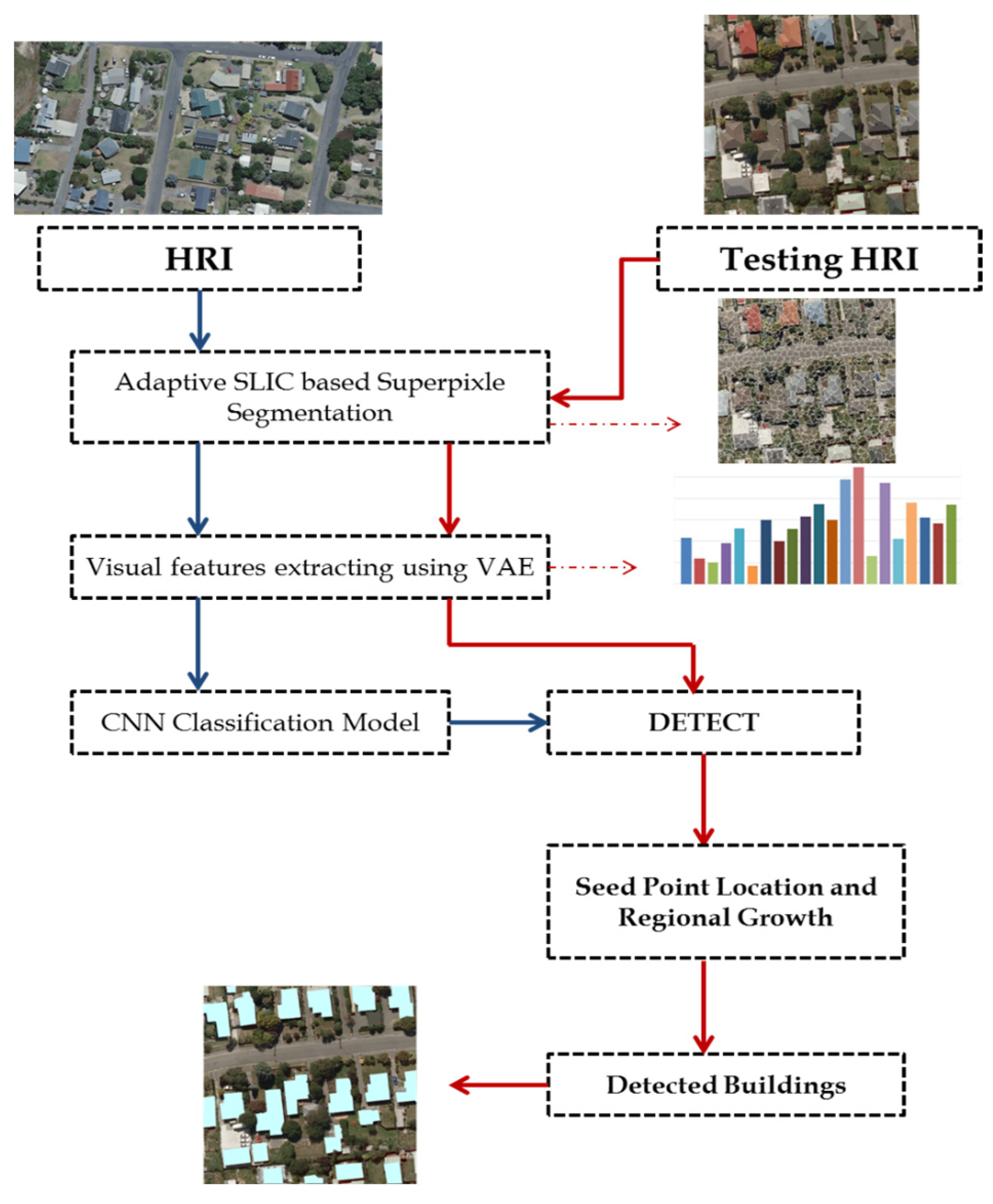
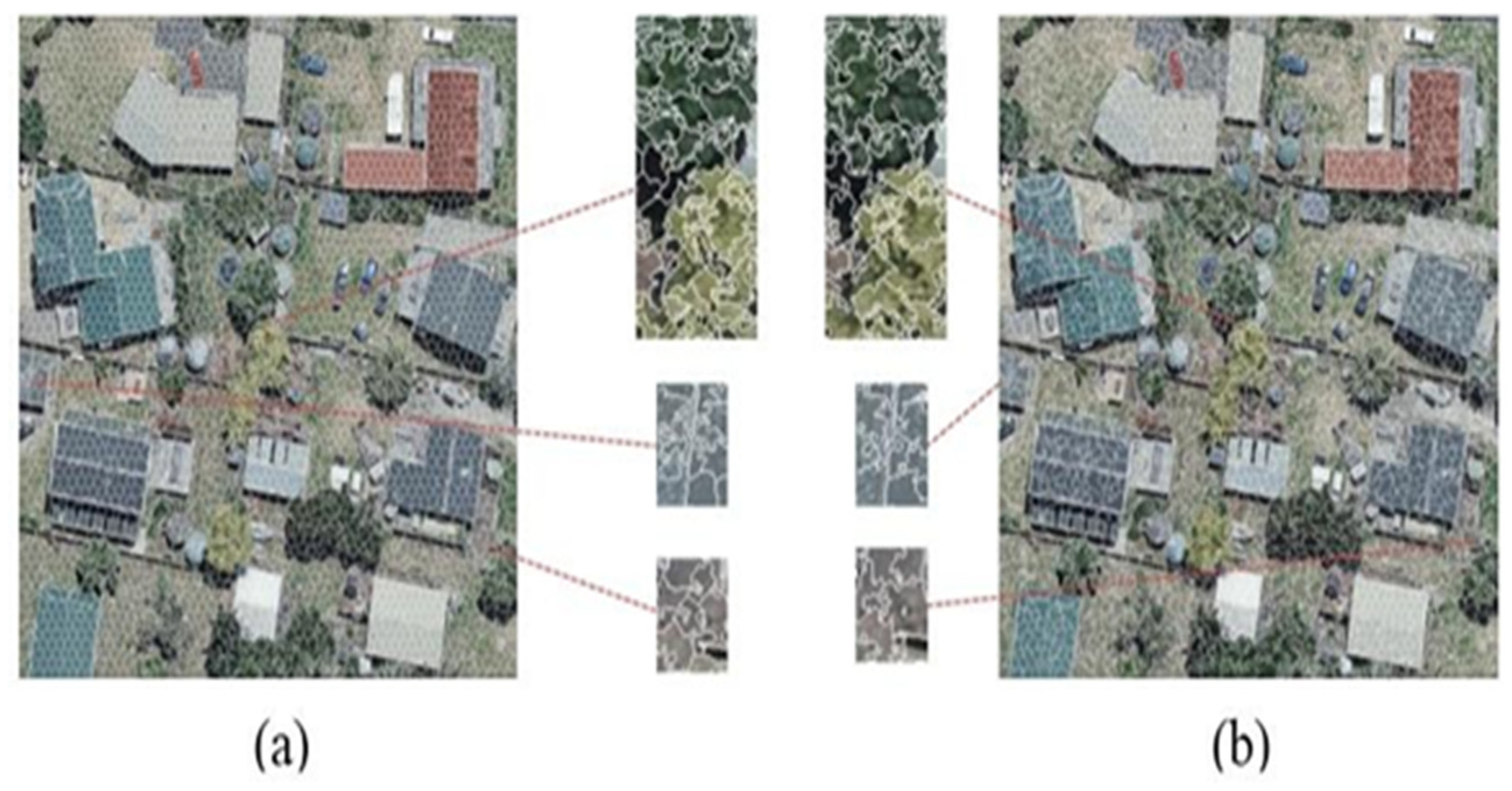
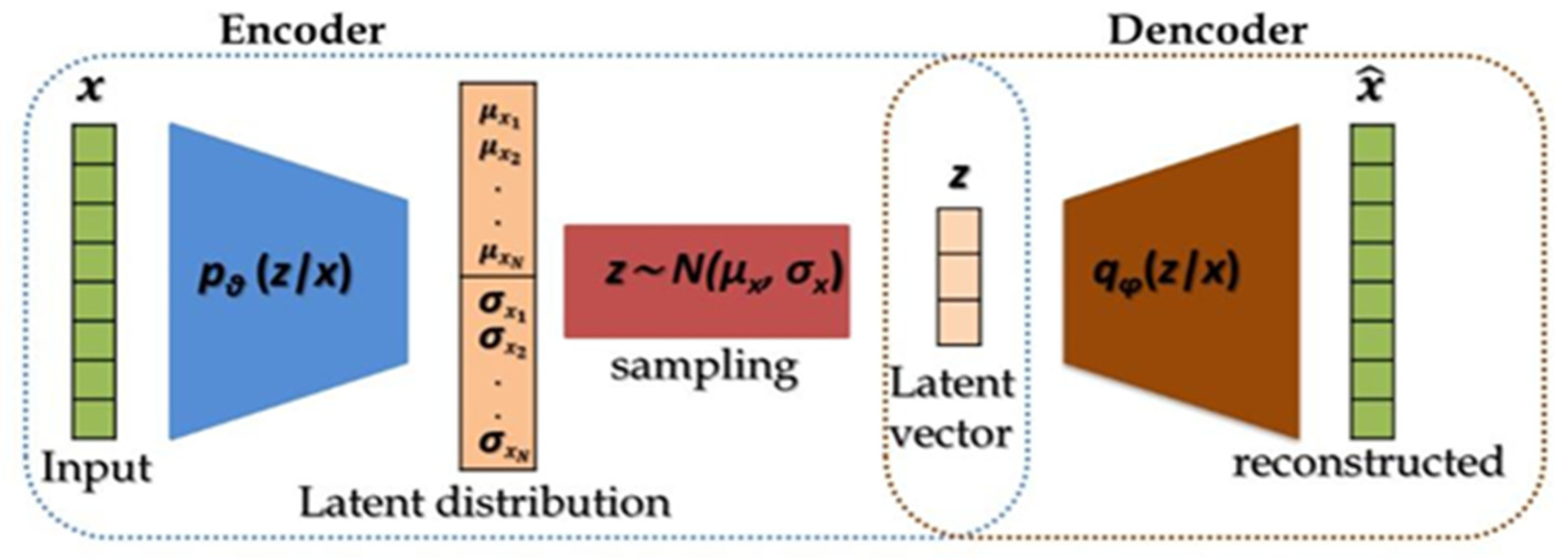
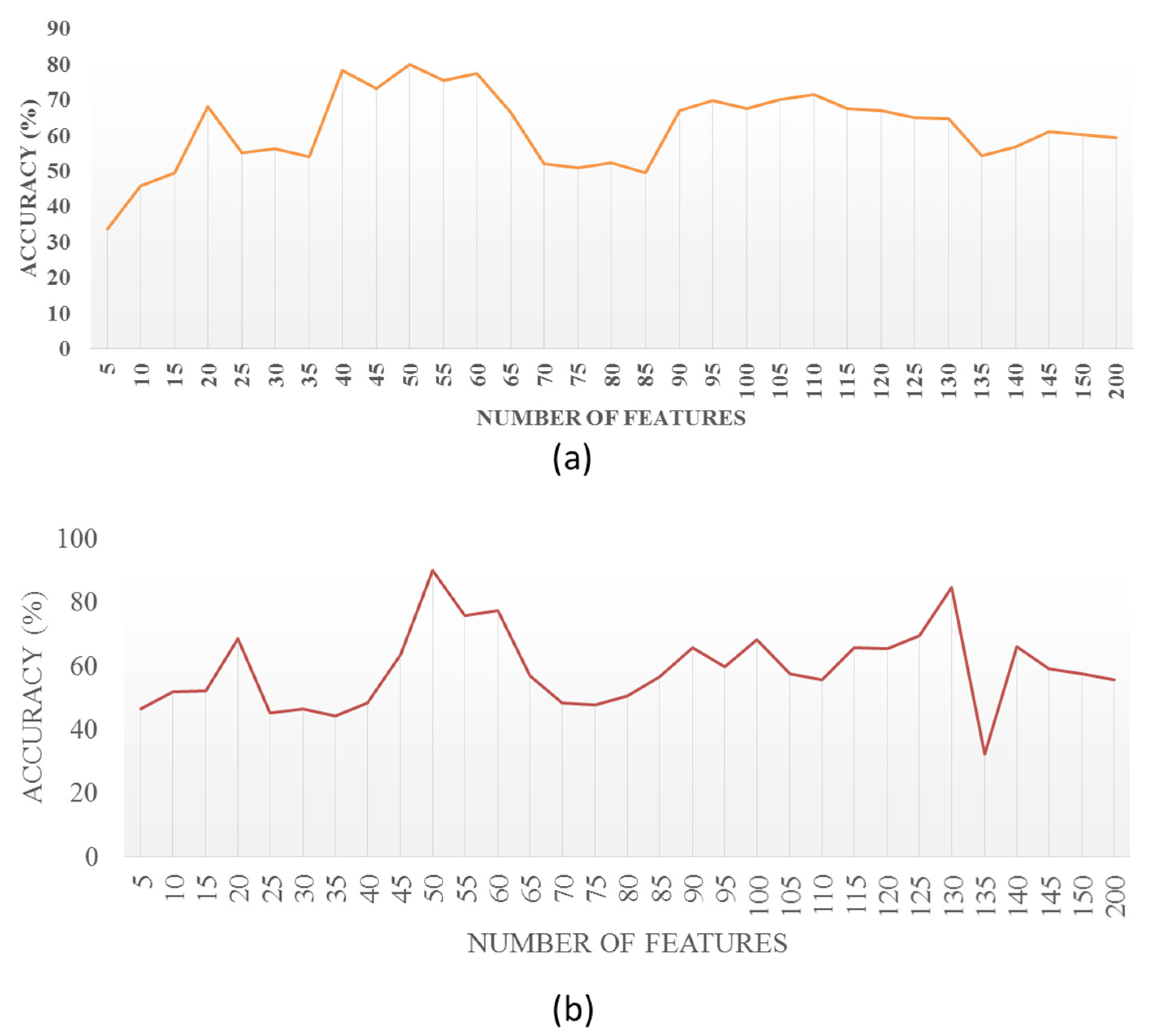
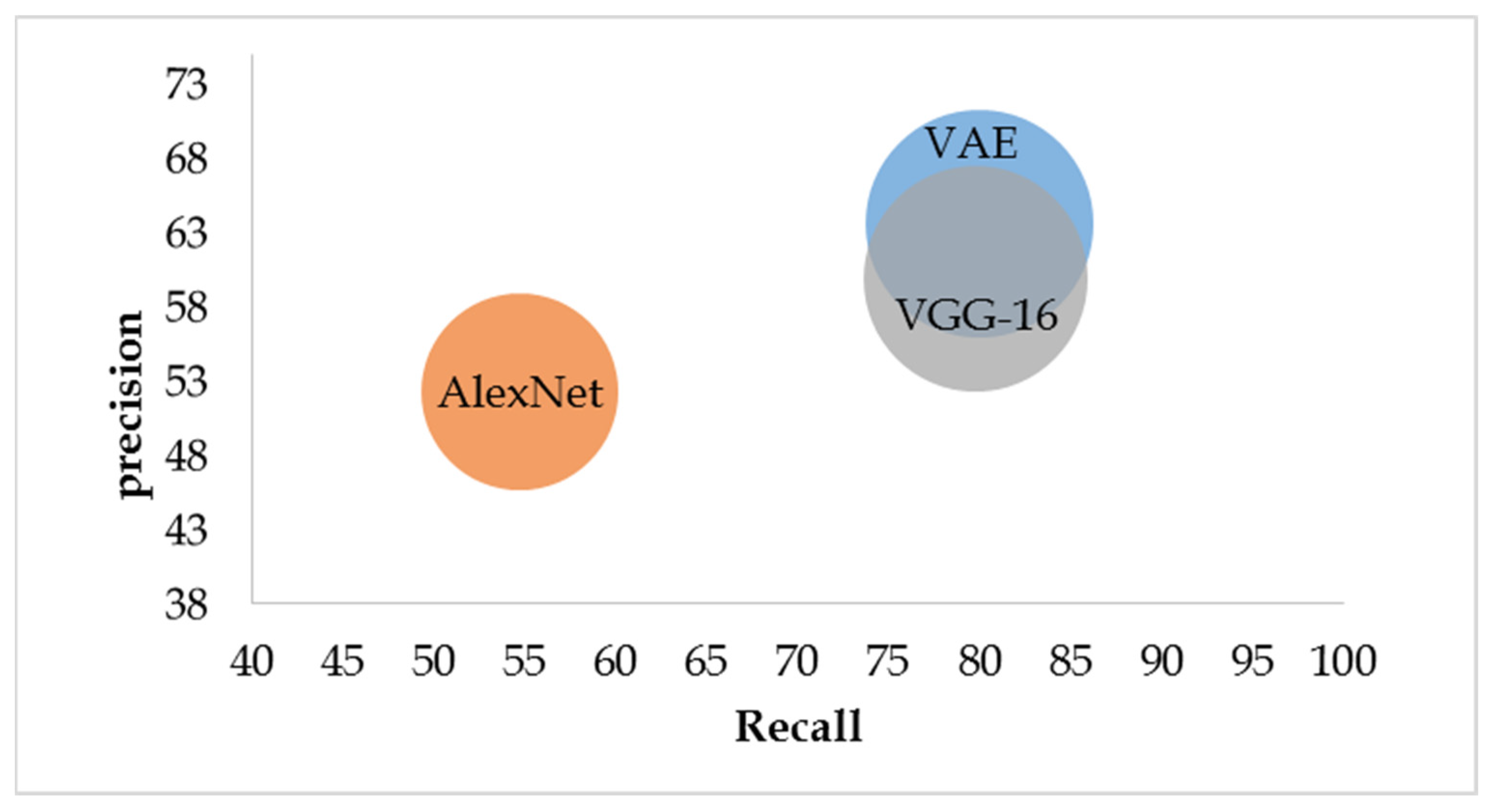


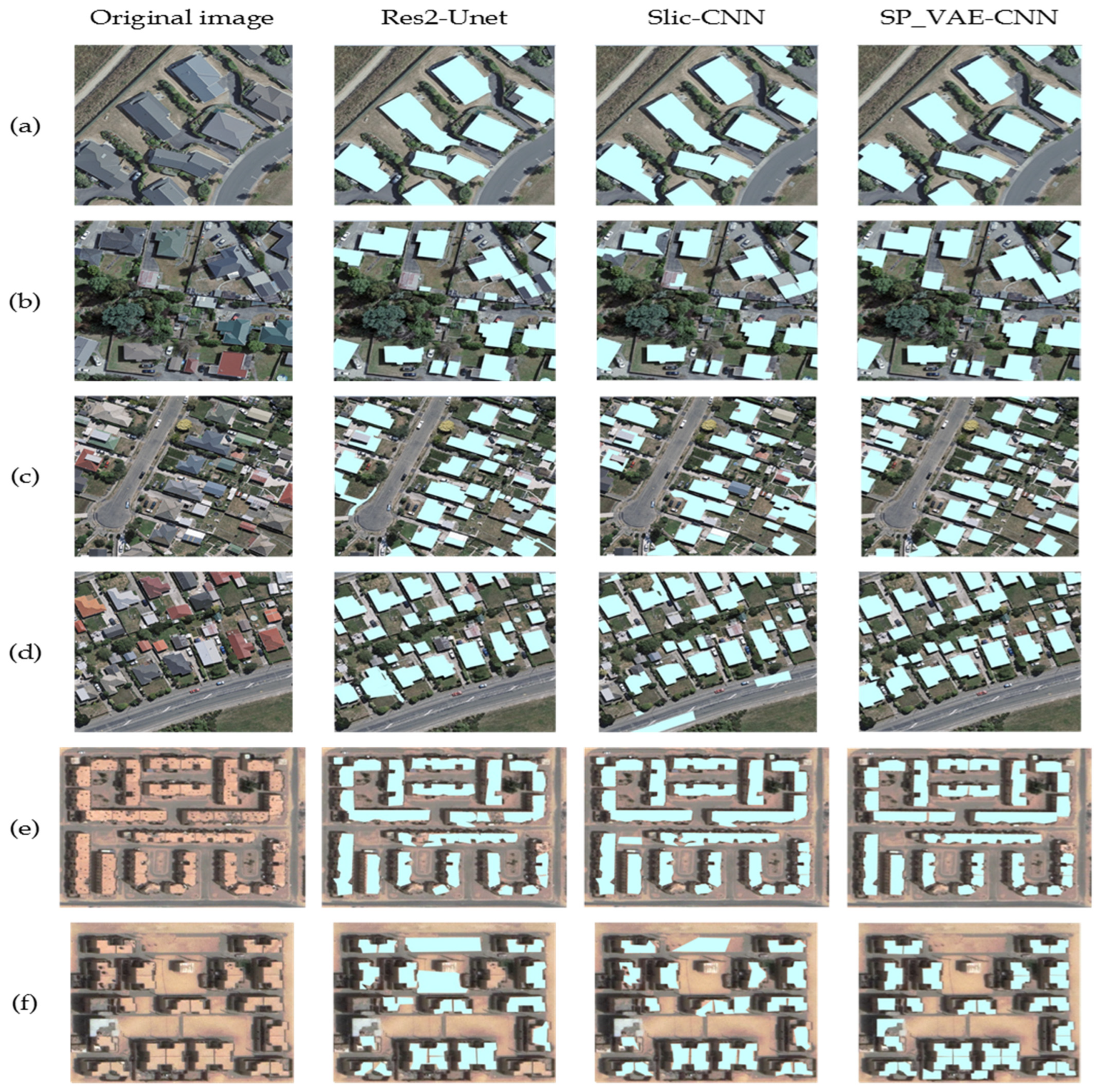
| Parameter (Items) | Search Space | Optimal Value |
|---|---|---|
| Number of filters (f) | 16; 32; 64; 128 | 128 |
| number of batch b | 2; 4; 8; 16; 62; 64; 128 | 8 |
| kernel size (k) | 3; 5 | 5 |
| Dropout rate | 0; 0.1; 0.2; 0.3; 0.4 | 0.2 |
| number of hidden nodes (h) | 5; 10; 50; 100; 500 | 10 |
| types of the optimizer (o) | RMSprop; Adagrad; Adadelta; Adam; Adamax; Nadam | Adamax |
| Methods | WHU Aerial Imagery 2016 Dataset | New Zealand Aerial Image of Masterton Dataset | GOOGLE Earth | ||||||||||||
|---|---|---|---|---|---|---|---|---|---|---|---|---|---|---|---|
| P | R | F1 | FNR | AUT | P | R | F1 | FNR | AUT | P | R | F1 | FNR | AUT | |
| Res2-Unet [11] | 95.83 | 95.13 | 95.48 | 4.87 | 90.79 | 96.57 | 95.17 | 95.86 | 4.83 | 91.12 | 77.32 | 81.96 | 79.57 | 18.04 | 62.81 |
| Slic-CNN | 92.14 | 94.16 | 93.14 | 5.84 | 91.73 | 92.89 | 94.69 | 93.78 | 5.31 | 92.35 | 69.11 | 71.89 | 70.47 | 28.11 | 44.17 |
| SP_VAE-CNN | 96.74 | 97.57 | 97.15 | 2.43 | 94.76 | 97.12 | 97.58 | 97.35 | 2.42 | 95.82 | 85.88 | 87.95 | 86.90 | 12.05 | 83.37 |
Disclaimer/Publisher’s Note: The statements, opinions and data contained in all publications are solely those of the individual author(s) and contributor(s) and not of MDPI and/or the editor(s). MDPI and/or the editor(s) disclaim responsibility for any injury to people or property resulting from any ideas, methods, instructions or products referred to in the content. |
© 2023 by the authors. Licensee MDPI, Basel, Switzerland. This article is an open access article distributed under the terms and conditions of the Creative Commons Attribution (CC BY) license (https://creativecommons.org/licenses/by/4.0/).
Share and Cite
Benchabana, A.; Kholladi, M.-K.; Bensaci, R.; Khaldi, B. Building Detection in High-Resolution Remote Sensing Images by Enhancing Superpixel Segmentation and Classification Using Deep Learning Approaches. Buildings 2023, 13, 1649. https://doi.org/10.3390/buildings13071649
Benchabana A, Kholladi M-K, Bensaci R, Khaldi B. Building Detection in High-Resolution Remote Sensing Images by Enhancing Superpixel Segmentation and Classification Using Deep Learning Approaches. Buildings. 2023; 13(7):1649. https://doi.org/10.3390/buildings13071649
Chicago/Turabian StyleBenchabana, Ayoub, Mohamed-Khireddine Kholladi, Ramla Bensaci, and Belal Khaldi. 2023. "Building Detection in High-Resolution Remote Sensing Images by Enhancing Superpixel Segmentation and Classification Using Deep Learning Approaches" Buildings 13, no. 7: 1649. https://doi.org/10.3390/buildings13071649
APA StyleBenchabana, A., Kholladi, M.-K., Bensaci, R., & Khaldi, B. (2023). Building Detection in High-Resolution Remote Sensing Images by Enhancing Superpixel Segmentation and Classification Using Deep Learning Approaches. Buildings, 13(7), 1649. https://doi.org/10.3390/buildings13071649






